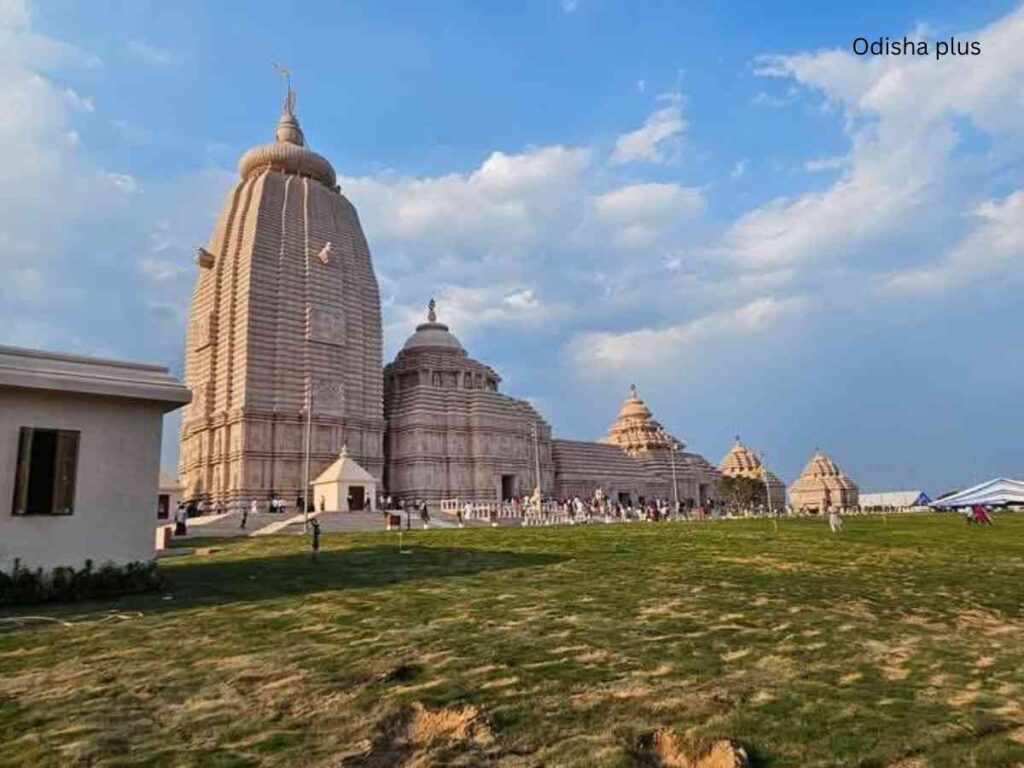The naming of a newly inaugurated Jagannath temple in Digha, West Bengal, as “Jagannath Dham” has triggered strong reactions across Odisha, igniting a debate over cultural identity, religious sanctity, and political intent
OdishaPlus Bureau

The recent inauguration of a new Jagannath Temple in Digha, West Bengal, by Chief Minister Mamata Banerjee has sparked a significant controversy, particularly among the people of Odisha.
The crux of the issue lies in the naming of the temple as “Jagannath Dham,” a term traditionally reserved for the ancient and revered Jagannath Temple in Puri, Odisha.
The term “Dham” in Hindu theology refers to a sacred place of pilgrimage. According to Hindu scriptures, there are four primary Dhams in India, established by the 8th-century philosopher Adi Shankaracharya: Badrinath in the north, Dwarka in the west, Rameswaram in the south, and Puri in the east. The Jagannath Temple in Puri, also known as Jagannath Dham, is one of these four sacred sites and holds immense religious significance for millions of devotees worldwide.
The Puri Jagannath Temple, built in the 12th century, is not only a major pilgrimage site but also a symbol of Odisha’s cultural heritage. The temple’s rituals, festivals, and traditions are deeply rooted in the region’s history and have been meticulously preserved over centuries. The annual Rath Yatra, where the deities are taken out in grand chariots, attracts millions of pilgrims and is a testament to the temple’s enduring spiritual and cultural importance.
The controversy began when the West Bengal government decided to name the newly inaugurated temple in Digha as “Jagannath Dham”. This move was met with immediate backlash from religious scholars, priests, and devotees in Odisha, who argued that the term “Jagannath Dham” is exclusively associated with the Puri temple and cannot be used for any other temple.
Critics argue that the use of the term “Dham” for the Digha temple undermines the unique identity and sanctity of the Puri Jagannath Temple. They contend that such a designation could lead to confusion among devotees and dilute the spiritual significance of the original Jagannath Dham.
Renowned sand artist and Padma Shri awardee Sudarsan Pattnaik has been vocal in his opposition, stating that the naming of the Digha temple as Jagannath Dham has deeply hurt the religious sentiments of millions of devotees.
The controversy has also taken on a political dimension, with leaders from both states weighing in on the issue. Odisha’s Law Minister Prithiviraj Harichandan has called for an investigation into the matter, emphasizing that the term “Jagannath Dham” should be reserved solely for the Puri temple.
The Shree Jagannath Temple Administration (SJTA) in Puri has been tasked with probing the allegations and addressing the concerns raised by devotees.
On the other hand, West Bengal Chief Minister Mamata Banerjee has defended the naming of the Digha temple, arguing that it is intended to promote cultural and religious tourism in the region. The temple, built over an area of 22 acres at an estimated cost of Rs 250 crore, is envisioned as both a spiritual center and a tourist attraction.
However, slogans such as “No need to go to Puri to see Jagannath Dham and the sea” have further inflamed tensions, with critics accusing the West Bengal government of attempting to appropriate Odisha’s cultural heritage.
Adding to the complexity of the controversy are reports that some servitors from the Puri Jagannath Temple participated in the inauguration ceremony of the Digha temple. This has led to allegations that sacred wood from the Puri temple, used in the construction of the idols, was also utilized for the Digha temple.
The concept of “Brahma,” a sacred and unique feature of the Puri temple’s idols, has been claimed to be present in the Digha temple’s idols as well, further complicating the issue.
The participation of Puri servitors in the Digha temple’s consecration has been met with criticism from various quarters in Odisha. Some servitors have been accused of betraying the sanctity of the Puri temple by endorsing the Digha temple’s designation as Jagannath Dham. This has prompted calls for disciplinary action against those involved and a thorough investigation into the matter.
The Jagannath Dham controversy highlights the delicate balance between preserving cultural heritage and promoting religious tourism. While the establishment of new temples can enhance spiritual and cultural connectivity, it is crucial to respect the historical and religious significance of existing sacred sites. The use of terms like “Dham” carries deep spiritual connotations and should be approached with sensitivity and respect for tradition.
The Jagannath Dham controversy serves as a reminder of the profound significance of religious and cultural symbols in India’s diverse spiritual landscape. It underscores the need for sensitivity and respect in matters of faith and heritage, and the importance of preserving the unique identities of sacred sites for future generations.




























